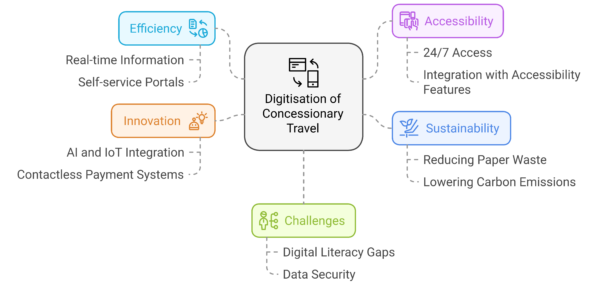In an era where technology drives innovation in virtually every aspect of our lives, Concessionary Travel is no exception. As councils strive for greater efficiency, accessibility, and sustainability, the digitisation of Concessionary Travel emerges as a beacon of progress. Historically paper-based and often cumbersome, Concessionary Travel has undergone a digital revolution. This transformation is driven by advancements in mobile technology, the rising demand for seamless travel experiences, and the need to create more sustainable transport solutions. The DfT’s digital transition in controlling the issuance of Blue Badges has further encouraged Local Authorities to adopt digital solutions, with some councils seeing 90% of Blue Badge applications made online.
Digital platforms now enable real-time information dissemination, allowing users to access and track applications, upload documentation, and make payments via self-serve portals. Digital self-service platforms have the potential to significantly improve the user experience for concessionary travel. By providing convenient 24/7 access to applications, information and support, these systems can streamline processes and increase user satisfaction. This accessibility fosters independence and confidence among citizens while ensuring a more efficient user experience. For example, digital platforms can integrate with accessibility features on smartphones, further aiding users with visual or physical impairments.
Digitisation aligns with broader sustainability goals by reducing paper waste and resource consumption. The UK government’s Net Zero Strategy highlights the importance of reducing carbon emissions – digital transformation has the power to do this across all sectors, including transport. Self-service capabilities further minimise unnecessary contact with councils, streamlining workflows and promoting efficiency. This reduction in physical interactions also translates to lower administrative costs for councils. Whilst precise figures for concessionary travel systems are debated within individual councils, many have reported financial savings after implementing digital systems.





